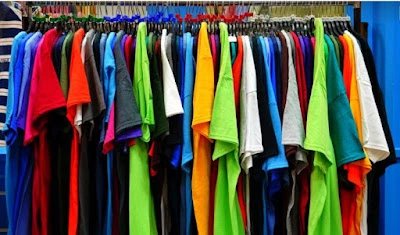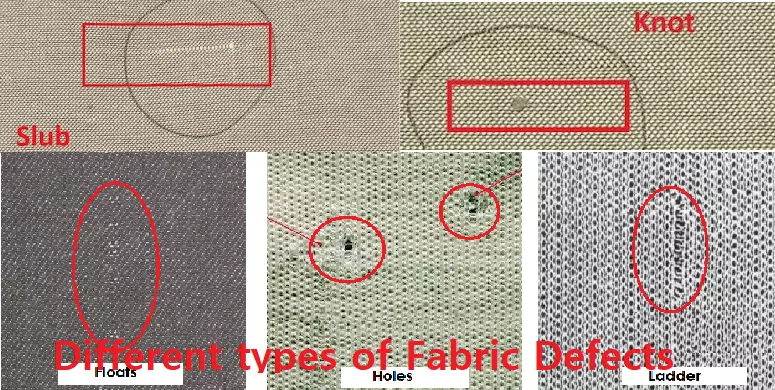Do you plan to place an order for T-shirts, or plan to start your own T-shirt manufacturing business? It is important for you to know about the different types of fabric used in T-shirts. In order to create the best t-shirt design, it is just essential to choose the right fabric. This is why it is vital to be aware of the different types of fabric available.
When were t-shirts invented? The concept of a lightweight, short-sleeved, collarless shirt made of cotton was introduced around the Spanish-American War in 1898. These shirts were issued to the U.S. Navy sailors as undergarments, and they resembled the modern T-shirt. They were called “undershirts” or “skivvies” at the time.
To achieve the right balance of comfort and fit, you need to take into account a number of factors. When it comes to designing a t-shirt, you have to keep in mind that every fabric has its own unique characteristics, where some materials are better suited to specific T-shirt designs than others. You can create amazing T-shirt designs using almost any fabric. It really depends on your preferences and those of the wearer. Take a look at the entire guide to learn more about the different types of fabrics used in T-shirts. Everything you were confused about will be cleared up. Okay. Let’s have a deep dive.
Do you plan to place an order for T-shirts, or plan to start your own print-on-demand T-shirt manufacturing business? It is important for you to know about the different types of fabric used in T-shirts. In order to create the best t-shirt design, it is just essential to choose the right fabric. This is why it is vital to be aware of the different types of fabric available.

T-Shirt Fabric Types: A Comprehensive Overview
Unfortunately, there is no accurate answer to what is the best fabric for a t-shirt or any shirt. Because there are no definitive answers, you can pick a variety of fabrics depending on your budget. It is true that each fabric has its own unique characteristics, with natural fibers being a little more expensive than synthetic materials. In general, you can choose any fabric according to your fashion sense and personal preferences. So let’s dig into the Different types of fabric used in T-shirts.
1. Cotton
The most common type of fabric used around the world is cotton. It is the only fabric that has managed to find its way into wardrobes worldwide. Whether it’s a t-shirt, dress, skirt, scarf, or pair of socks, cotton is the most common fabric. It’s readily available, and it’s often the most affordable. Cotton fabric is highly durable and offers a comfortable fit for t-shirts. Depending on the type of cotton used, the fabric is often extremely soft on the skin so that it helps prevent skin rashes and other skin ailments.
Cotton fabrics are available in a variety of styles and types. Let’s explore them one by one.
- 100% Cotton:
A typical 100% cotton t-shirt is made with carded open-end fibers, giving it a fuzzy appearance when examined under a microscope. Due to the fact that these T-shirts are durable, this is the normal standard.
- Combed Cotton
One of the most popular fabrics is combed cotton. Cotton fibers are treated before being spun into yarn to produce this material. The fibers are straightened with fine brushes after short strands have been removed. As a result, the fabric is stronger and smoother. There is a slight cost premium for combed cotton, but its softness more than makes up for that.
- Organic Cotton
Organic Cotton is super soft when it comes to material, and as awareness about global warming increases, so will its production. By purchasing organic cotton, you will not only be contributing to an eco-movement towards more sustainable practices, but you will also have a very soft, comfortable shirt that makes a positive statement about your brand.
- Pima Cotton
Cotton from Pima is considered to be the best quality available. Extra-long fibers make this type of cotton extremely soft and durable. Pima cotton does not pill, fade, or stretch despite multiple washes. The cotton actually gets softer with each wash.
- Ring-spun Cotton
To make fine cotton fiber ropes, ring-spun cotton is created by continuously twisting and thinning cotton strands. This twisting makes the short hairs of the cotton stand out, creating a stronger, softer yarn. In addition, the number of twists determines how soft the fabric is. You will often see ring-spun described as “30 Singles Ring-Spun”. It refers to the yarn diameter. As the number increases, the yarn becomes thinner and softer because it is twisted more times.
- Slub Cotton
A slub cotton fabric is a cotton fabric that appears to have small lumps in it. The lumps are due to the twisting of the cotton before weaving, resulting in irregular twists. It produces a unique fabric that is textured well. Slub T-Shirts are light and airy, without clinging. A bonus is that it doesn’t require ironing because it is not designed to look flat.
Regardless of the type of cotton, the more cotton in your fabric, the better it can absorb colors and paint. Therefore, cotton will be the best material for a printing method that uses water-based ink, complex designs, and high levels of detail.
Right now, you got a clear idea about different types of cotton fabrics. Let’s know the other fabrics gradually.
2. Linen
Even though linen might not immediately spring to mind as a suitable fabric for T-shirts, it is a very versatile fabric that not only looks good from the start, but its quality even improves with age and washing. Because linen is loosely woven and sheer, it provides wearers with a sense of comfort while looking elegant.
As the textured weave dries quickly, you can stay cool during the summer. It’s no secret that linen is a popular material for summer t-shirts, so you know it’s a great option for making your next dress.
3. Polyester:
Another commonly used fabric for t-shirts is polyester. Polyester dries quickly and does not mildew. As a result, it keeps its shape without stretching. A large number of athletic apparel companies use polyester to make their t-shirts. Polyester is a synthetic fiber that includes nylon, acetate, and acrylic fabrics.
Polyester is durable and dries quickly after washing. Additionally, it is flexible, cost-effective, recyclable, and can be blended with cotton. Unfortunately, there are some negative side effects as well. Polyester doesn’t break down quickly, doesn’t breathe easily, and can release plastic microfibers when washed, which causes water pollution.
4. Rayon:
Rayon is another athletic-wear fiber that has been created as a cheaper alternative to silk. Rayon is a natural fiber made of trees, plants, and cotton. Ultimately, you’ll get a fabric that is breathable, silky and drapes effortlessly. It dyes beautifully, and it is absorbent. Despite this, it does wrinkle easily and isn’t known for its eco-friendliness.
5. Poly-Cotton Blend:
A poly-cotton blend is a mix of polyester and cotton that combines the best of both worlds – natural and synthetic fabrics. In addition, it is a more affordable alternative to 100% cotton and may prove to be cheaper. The fabric holds its shape well and tends not to shrink as much as 100% cotton, which tends to shrink after multiple items of washing.
6. Lycra:
The most well-known name of this fabric is Lycra, but it is actually Spandex, which is an additive to other t-shirt materials. Generally, it’s found in athletic clothing due to the ease of movement, and it’s used to give t-shirts extra room to stretch.
7. Tri-Blends:
Tri-Blend fabrics are typically cotton, polyester, and rayon blends, so they usually take on the best characteristics of all three fabrics. They are lightweight like rayon but have the softness of cotton. They’re an excellent balance of comfort, durability, and style for t-shirts.
Now let’s know some alternatives to different types of fabric used in T-shirts.
Alternative T-shirt Fabric Options
With this information, you know almost everything there is to know about fabrics. There are a couple more options if you’re looking for something a little different. Compared to the first options, these are more limited and therefore more expensive.
In addition, they offer some very unique benefits, especially if you’re headed somewhere cold or need something to keep you cool during your workout.
1. Bamboo
A growing number of t-shirts are made of bamboo because of their antibacterial and moisture-wicking properties. The t-shirts are great for running or working out. It can help keep the temperature down and make a hot summer day a little more bearable.
2. Viscose
Viscose is the type of rayon made from wood pulp. It has similar qualities to rayon, but bamboo is also great for workouts because of its natural moisture-wicking property.
3. Hemp
Despite hemp’s long history, hemp apparel is just now gaining popularity – and for a good reason. In addition to being incredibly comfortable, hemp also actively saves the planet by absorbing massive amounts of carbon dioxide.
Which Fabric Is Better: Natural or Synthetic?
What do you think, natural or synthetic? It’s up to you. There is no right or wrong answer. It all depends on what you find to be rational.
Traditionally, natural fabrics have been a popular choice for printing t-shirts online. The fibers are collected from natural sources and then woven into a textile.
However, synthetic fabrics are man-made and appear to be plastic-like in appearance. Despite this, they are a great alternative to natural fabrics when it comes to comfort and sustainability. It is so hard to tell the difference between them and natural fabrics unless you check the label on the garment.
In terms of elasticity and impermeability, synthetic fabrics outperform their natural counterparts. For these reasons, synthetic fabrics have become popular for custom t-shirts.
If you consider natural or synthetic fabrics for your design, consider the printing technique you intend to use. This is because natural fabrics absorb liquids well, while synthetic ones tend to repel them.
Final Verdict
When choosing a fabric, there is no one size fits all solution. Depending on your design and preferences, select the best fabric for your t-shirt. You should ultimately select a fabric that is comfortable and looks good.
Make sure you choose a material that is comfortable fits well and is the most appropriate option for your needs. Regardless of which fabric you choose, it is important to follow the care instructions on your t-shirts for them to last as long as possible.
The cotton fabric is a great option for t-shirts, but it is expensive to produce, needs more water and land, and is prone to tearing and damage. Perhaps there is an alternative. In some cases, synthetics were created for cost-cutting purposes, but are not always of high quality. However, synthetic fabrics do improve breathability and other functional features like stretchability, elasticity, lightness, and fast-drying capabilities.


